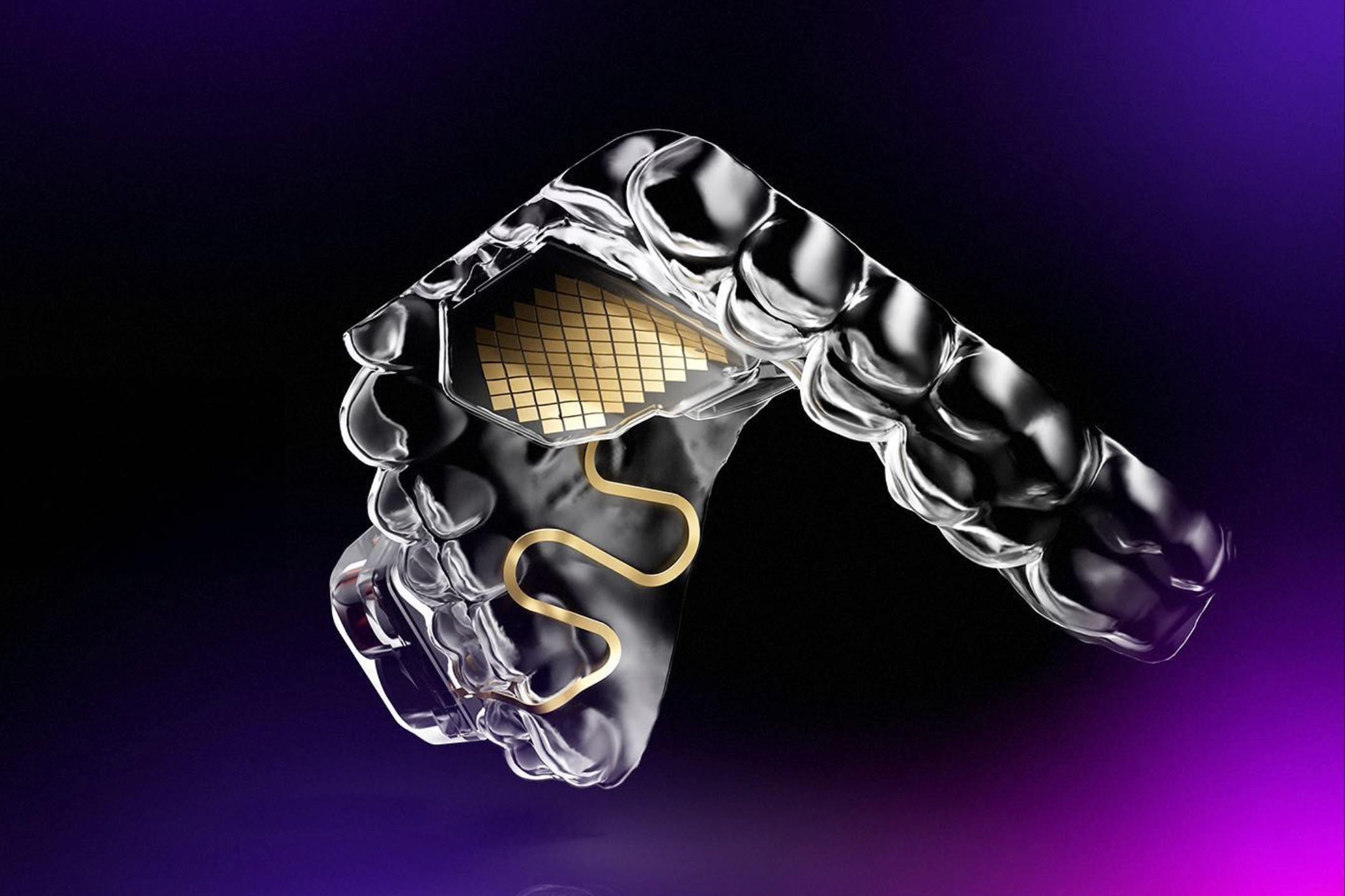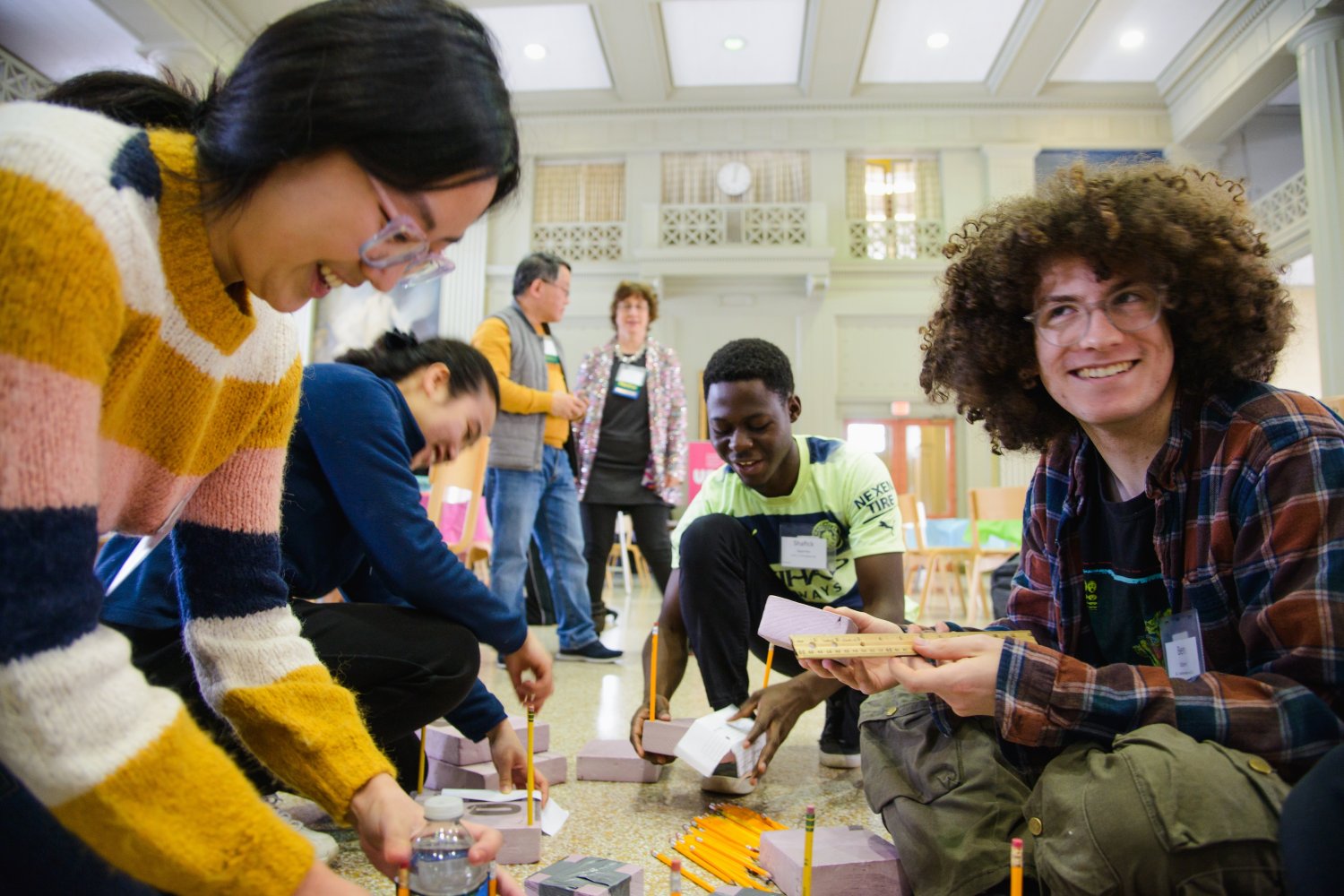People around the world rely on trucks to deliver the goods they need, and so-called long-haul trucks play a critical role in those supply chains. In the United States, long-haul trucks moved 71 percent of all freight in 2022. But those long-haul trucks are heavy polluters, especially of the carbon emissions that threaten the global climate. According to U.S. Environmental Protection Agency estimates, in 2022 more than 3 percent of all carbon dioxide (CO2) emissions came from long-haul trucks.
The problem is that long-haul trucks run almost exclusively on diesel fuel, and burning diesel releases high levels of CO2 and other carbon emissions. Global demand for freight transport is projected to as much as double by 2050, so it’s critical to find another source of energy that will meet the needs of long-haul trucks while also reducing their carbon emissions. And conversion to the new fuel must not be costly. “Trucks are an indispensable part of the modern supply chain, and any increase in the cost of trucking will be felt universally,” notes William H. Green, the Hoyt Hottel Professor in Chemical Engineering and director of the MIT Energy Initiative.
For the past year, Green and his research team have been seeking a low-cost, cleaner alternative to diesel. Finding a replacement is difficult because diesel meets the needs of the trucking industry so well. For one thing, diesel has a high energy density — that is, energy content per pound of fuel. There’s a legal limit on the total weight of a truck and its contents, so using an energy source with a lower weight allows the truck to carry more payload — an important consideration, given the low profit margin of the freight industry. In addition, diesel fuel is readily available at retail refueling stations across the country — a critical resource for drivers, who may travel 600 miles in a day and sleep in their truck rather than returning to their home depot. Finally, diesel fuel is a liquid, so it’s easy to distribute to refueling stations and then pump into trucks.
Past studies have examined numerous alternative technology options for powering long-haul trucks, but no clear winner has emerged. Now, Green and his team have evaluated the available options based on consistent and realistic assumptions about the technologies involved and the typical operation of a long-haul truck, and assuming no subsidies to tip the cost balance. Their in-depth analysis of converting long-haul trucks to battery electric — summarized below — found a high cost and negligible emissions gains in the near term. Studies of methanol and other liquid fuels from biomass are ongoing, but already a major concern is whether the world can plant and harvest enough biomass for biofuels without destroying the ecosystem. An analysis of hydrogen — also summarized below — highlights specific challenges with using that clean-burning fuel, which is a gas at normal temperatures.
Finally, the team identified an approach that could make hydrogen a promising, low-cost option for long-haul trucks. And, says Green, “it’s an option that most people are probably unaware of.” It involves a novel way of using materials that can pick up hydrogen, store it, and then release it when and where it’s needed to serve as a clean-burning fuel.
Defining the challenge: A realistic drive cycle, plus diesel values to beat
The MIT researchers believe that the lack of consensus on the best way to clean up long-haul trucking may have a simple explanation: Different analyses are based on different assumptions about the driving behavior of long-haul trucks. Indeed, some of them don’t accurately represent actual long-haul operations. So the first task for the MIT team was to define a representative — and realistic — “drive cycle” for actual long-haul truck operations in the United States. Then the MIT researchers — and researchers elsewhere — can assess potential replacement fuels and engines based on a consistent set of assumptions in modeling and simulation analyses.
To define the drive cycle for long-haul operations, the MIT team used a systematic approach to analyze many hours of real-world driving data covering 58,000 miles. They examined 10 features and identified three — daily range, vehicle speed, and road grade — that have the greatest impact on energy demand and thus on fuel consumption and carbon emissions. The representative drive cycle that emerged covers a distance of 600 miles, an average vehicle speed of 55 miles per hour, and a road grade ranging from negative 6 percent to positive 6 percent.
The next step was to generate key values for the performance of the conventional diesel “powertrain,” that is, all the components involved in creating power in the engine and delivering it to the wheels on the ground. Based on their defined drive cycle, the researchers simulated the performance of a conventional diesel truck, generating “benchmarks” for fuel consumption, CO2 emissions, cost, and other performance parameters.
Now they could perform parallel simulations — based on the same drive-cycle assumptions — of possible replacement fuels and powertrains to see how the cost, carbon emissions, and other performance parameters would compare to the diesel benchmarks.
The battery electric option
When considering how to decarbonize long-haul trucks, a natural first thought is battery power. After all, battery electric cars and pickup trucks are proving highly successful. Why not switch to battery electric long-haul trucks? “Again, the literature is very divided, with some studies saying that this is the best idea ever, and other studies saying that this makes no sense,” says Sayandeep Biswas, a graduate student in chemical engineering.
To assess the battery electric option, the MIT researchers used a physics-based vehicle model plus well-documented estimates for the efficiencies of key components such as the battery pack, generators, motor, and so on. Assuming the previously described drive cycle, they determined operating parameters, including how much power the battery-electric system needs. From there they could calculate the size and weight of the battery required to satisfy the power needs of the battery electric truck.
The outcome was disheartening. Providing enough energy to travel 600 miles without recharging would require a 2 megawatt-hour battery. “That’s a lot,” notes Kariana Moreno Sader, a graduate student in chemical engineering. “It’s the same as what two U.S. households consume per month on average.” And the weight of such a battery would significantly reduce the amount of payload that could be carried. An empty diesel truck typically weighs 20,000 pounds. With a legal limit of 80,000 pounds, there’s room for 60,000 pounds of payload. The 2 MWh battery would weigh roughly 27,000 pounds — significantly reducing the allowable capacity for carrying payload.
Accounting for that “payload penalty,” the researchers calculated that roughly four electric trucks would be required to replace every three of today’s diesel-powered trucks. Furthermore, each added truck would require an additional driver. The impact on operating expenses would be significant.
Analyzing the emissions reductions that might result from shifting to battery electric long-haul trucks also brought disappointing results. One might assume that using electricity would eliminate CO2 emissions. But when the researchers included emissions associated with making that electricity, that wasn’t true.
“Battery electric trucks are only as clean as the electricity used to charge them,” notes Moreno Sader. Most of the time, drivers of long-haul trucks will be charging from national grids rather than dedicated renewable energy plants. According to Energy Information Agency statistics, fossil fuels make up more than 60 percent of the current U.S. power grid, so electric trucks would still be responsible for significant levels of carbon emissions. Manufacturing batteries for the trucks would generate additional CO2 emissions.
Building the charging infrastructure would require massive upfront capital investment, as would upgrading the existing grid to reliably meet additional energy demand from the long-haul sector. Accomplishing those changes would be costly and time-consuming, which raises further concern about electrification as a means of decarbonizing long-haul freight.
In short, switching today’s long-haul diesel trucks to battery electric power would bring major increases in costs for the freight industry and negligible carbon emissions benefits in the near term. Analyses assuming various types of batteries as well as other drive cycles produced comparable results.
However, the researchers are optimistic about where the grid is going in the future. “In the long term, say by around 2050, emissions from the grid are projected to be less than half what they are now,” says Moreno Sader. “When we do our calculations based on that prediction, we find that emissions from battery electric trucks would be around 40 percent lower than our calculated emissions based on today’s grid.”
For Moreno Sader, the goal of the MIT research is to help “guide the sector on what would be the best option.” With that goal in mind, she and her colleagues are now examining the battery electric option under different scenarios — for example, assuming battery swapping (a depleted battery isn’t recharged but replaced by a fully charged one), short-haul trucking, and other applications that might produce a more cost-competitive outcome, even for the near term.
A promising option: hydrogen
As the world looks to get off reliance on fossil fuels for all uses, much attention is focusing on hydrogen. Could hydrogen be a good alternative for today’s diesel-burning long-haul trucks?
To find out, the MIT team performed a detailed analysis of the hydrogen option. “We thought that hydrogen would solve a lot of the problems we had with battery electric,” says Biswas. It doesn’t have associated CO2 emissions. Its energy density is far higher, so it doesn’t create the weight problem posed by heavy batteries. In addition, existing compression technology can get enough hydrogen fuel into a regular-sized tank to cover the needed distance and range. “You can actually give drivers the range they want,” he says. “There’s no issue with ‘range anxiety.’”
But while using hydrogen for long-haul trucking would reduce carbon emissions, it would cost far more than diesel. Based on their detailed analysis of hydrogen, the researchers concluded that the main source of incurred cost is in transporting it. Hydrogen can be made in a chemical facility, but then it needs to be distributed to refueling stations across the country. Conventionally, there have been two main ways of transporting hydrogen: as a compressed gas and as a cryogenic liquid. As Biswas notes, the former is “super high pressure,” and the latter is “super cold.” The researchers’ calculations show that as much as 80 percent of the cost of delivered hydrogen is due to transportation and refueling, plus there’s the need to build dedicated refueling stations that can meet new environmental and safety standards for handling hydrogen as a compressed gas or a cryogenic liquid.
Having dismissed the conventional options for shipping hydrogen, they turned to a less-common approach: transporting hydrogen using “liquid organic hydrogen carriers” (LOHCs), special organic (carbon-containing) chemical compounds that can under certain conditions absorb hydrogen atoms and under other conditions release them.
LOHCs are in use today to deliver small amounts of hydrogen for commercial use. Here’s how the process works: In a chemical plant, the carrier compound is brought into contact with hydrogen in the presence of a catalyst under elevated temperature and pressure, and the compound picks up the hydrogen. The “hydrogen-loaded” compound — still a liquid — is then transported under atmospheric conditions. When the hydrogen is needed, the compound is again exposed to a temperature increase and a different catalyst, and the hydrogen is released.
LOHCs thus appear to be ideal hydrogen carriers for long-haul trucking. They’re liquid, so they can easily be delivered to existing refueling stations, where the hydrogen would be released; and they contain at least as much energy per gallon as hydrogen in a cryogenic liquid or compressed gas form. However, a detailed analysis of using hydrogen carriers showed that the approach would decrease emissions but at a considerable cost.
The problem begins with the “dehydrogenation” step at the retail station. Releasing the hydrogen from the chemical carrier requires heat, which is generated by burning some of the hydrogen being carried by the LOHC. The researchers calculate that getting the needed heat takes 36 percent of that hydrogen. (In theory, the process would take only 27 percent — but in reality, that efficiency won’t be achieved.) So out of every 100 units of starting hydrogen, 36 units are now gone.
But that’s not all. The hydrogen that comes out is at near-ambient pressure. So the facility dispensing the hydrogen will need to compress it — a process that the team calculates will use up 20-30 percent of the starting hydrogen.
Because of the needed heat and compression, there’s now less than half of the starting hydrogen left to be delivered to the truck — and as a result, the hydrogen fuel becomes twice as expensive. The bottom line is that the technology works, but “when it comes to really beating diesel, the economics don’t work. It’s quite a bit more expensive,” says Biswas. In addition, the refueling stations would require expensive compressors and auxiliary units such as cooling systems. The capital investment and the operating and maintenance costs together imply that the market penetration of hydrogen refueling stations will be slow.
A better strategy: onboard release of hydrogen from LOHCs
Given the potential benefits of using of LOHCs, the researchers focused on how to deal with both the heat needed to release the hydrogen and the energy needed to compress it. “That’s when we had the idea,” says Biswas. “Instead of doing the dehydrogenation [hydrogen release] at the refueling station and then loading the truck with hydrogen, why don’t we just take the LOHC and load that onto the truck?” Like diesel, LOHC is a liquid, so it’s easily transported and pumped into trucks at existing refueling stations. “We’ll then make hydrogen as it’s needed based on the power demands of the truck — and we can capture waste heat from the engine exhaust and use it to power the dehydrogenation process,” says Biswas.
In their proposed plan, hydrogen-loaded LOHC is created at a chemical “hydrogenation” plant and then delivered to a retail refueling station, where it’s pumped into a long-haul truck. Onboard the truck, the loaded LOHC pours into the fuel-storage tank. From there it moves to the “dehydrogenation unit” — the reactor where heat and a catalyst together promote chemical reactions that separate the hydrogen from the LOHC. The hydrogen is sent to the powertrain, where it burns, producing energy that propels the truck forward.
Hot exhaust from the powertrain goes to a “heat-integration unit,” where its waste heat energy is captured and returned to the reactor to help encourage the reaction that releases hydrogen from the loaded LOHC. The unloaded LOHC is pumped back into the fuel-storage tank, where it’s kept in a separate compartment to keep it from mixing with the loaded LOHC. From there, it’s pumped back into the retail refueling station and then transported back to the hydrogenation plant to be loaded with more hydrogen.
Switching to onboard dehydrogenation brings down costs by eliminating the need for extra hydrogen compression and by using waste heat in the engine exhaust to drive the hydrogen-release process. So how does their proposed strategy look compared to diesel? Based on a detailed analysis, the researchers determined that using their strategy would be 18 percent more expensive than using diesel, and emissions would drop by 71 percent.
But those results need some clarification. The 18 percent cost premium of using LOHC with onboard hydrogen release is based on the price of diesel fuel in 2020. In spring of 2023 the price was about 30 percent higher. Assuming the 2023 diesel price, the LOHC option is actually cheaper than using diesel.
Both the cost and emissions outcomes are affected by another assumption: the use of “blue hydrogen,” which is hydrogen produced from natural gas with carbon capture and storage. Another option is to assume the use of “green hydrogen,” which is hydrogen produced using electricity generated from renewable sources, such as wind and solar. Green hydrogen is much more expensive than blue hydrogen, so then the costs would increase dramatically.
If in the future the price of green hydrogen drops, the researchers’ proposed plan would shift to green hydrogen — and then the decline in emissions would no longer be 71 percent but rather close to 100 percent. There would be almost no emissions associated with the researchers’ proposed plan for using LHOCs with onboard hydrogen release.
Comparing the options on cost and emissions
To compare the options, Moreno Sader prepared bar charts showing the per-mile cost of shipping by truck in the United States and the CO2 emissions that result using each of the fuels and approaches discussed above: diesel fuel, battery electric, hydrogen as a cryogenic liquid or compressed gas, and LOHC with onboard hydrogen release. The LOHC strategy with onboard dehydrogenation looked promising on both the cost and the emissions charts. In addition to such quantitative measures, the researchers believe that their strategy addresses two other, less-obvious challenges in finding a less-polluting fuel for long-haul trucks.
First, the introduction of the new fuel and trucks to use it must not disrupt the current freight-delivery setup. “You have to keep the old trucks running while you’re introducing the new ones,” notes Green. “You cannot have even a day when the trucks aren’t running because it’d be like the end of the economy. Your supermarket shelves would all be empty; your factories wouldn’t be able to run.” The researchers’ plan would be completely compatible with the existing diesel supply infrastructure and would require relatively minor retrofits to today’s long-haul trucks, so the current supply chains would continue to operate while the new fuel and retrofitted trucks are introduced.
Second, the strategy has the potential to be adopted globally. Long-haul trucking is important in other parts of the world, and Moreno Sader thinks that “making this approach a reality is going to have a lot of impact, not only in the United States but also in other countries,” including her own country of origin, Colombia. “This is something I think about all the time.” The approach is compatible with the current diesel infrastructure, so the only requirement for adoption is to build the chemical hydrogenation plant. “And I think the capital expenditure related to that will be less than the cost of building a new fuel-supply infrastructure throughout the country,” says Moreno Sader.
Testing in the lab
“We’ve done a lot of simulations and calculations to show that this is a great idea,” notes Biswas. “But there’s only so far that math can go to convince people.” The next step is to demonstrate their concept in the lab.
To that end, the researchers are now assembling all the core components of the onboard hydrogen-release reactor as well as the heat-integration unit that’s key to transferring heat from the engine exhaust to the hydrogen-release reactor. They estimate that this spring they’ll be ready to demonstrate their ability to release hydrogen and confirm the rate at which it’s formed. And — guided by their modeling work — they’ll be able to fine-tune critical components for maximum efficiency and best performance.
The next step will be to add an appropriate engine, specially equipped with sensors to provide the critical readings they need to optimize the performance of all their core components together. By the end of 2024, the researchers hope to achieve their goal: the first experimental demonstration of a power-dense, robust onboard hydrogen-release system with highly efficient heat integration.
In the meantime, they believe that results from their work to date should help spread the word, bringing their novel approach to the attention of other researchers and experts in the trucking industry who are now searching for ways to decarbonize long-haul trucking.
Financial support for development of the representative drive cycle and the diesel benchmarks as well as the analysis of the battery electric option was provided by the MIT Mobility Systems Center of the MIT Energy Initiative. Analysis of LOHC-powered trucks with onboard dehydrogenation was supported by the MIT Climate and Sustainability Consortium. Sayandeep Biswas is supported by a fellowship from the Martin Family Society of Fellows for Sustainability, and Kariana Moreno Sader received fellowship funding from MathWorks through the MIT School of Science.








